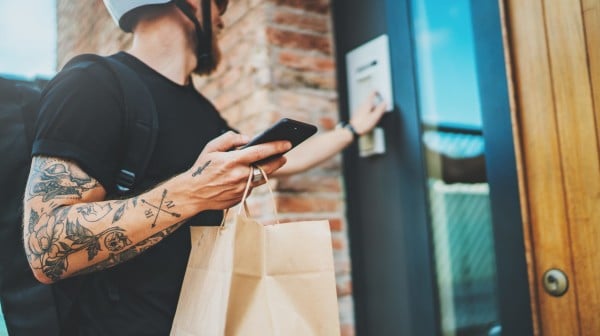How to Become a Quick Service Restaurant in 10 Simple Steps
Following the emergence of the coronavirus, hospitality businesses throughout the United States have implemented takeout, pickup, and delivery services as a way of remaining profitable while social distancing restrictions remain in place.
In this guide, we explain how any restaurant can pivot to takeaway and delivery in ten simple steps:
1. Pickup, takeout, or both?
Do you want to just offer pickup? Or do you want to use a delivery partner such as GrubHub and Uber Eats?
These services will charge a fee but help you reach many more customers and start-up quickly. If you already have a loyal following or don’t like the fee, you can also do it yourself or employ your own driver(s).

2. Simplify your menu
With in-house dining, it may be easy to have a sprawling menu with complex dishes, but when looking at large volume deliveries you will want to simplify menu items so they can be quickly prepared and easily put into containers for transportation.
With a good point of sale system, you can disable any menu items, saving them for later. Or quickly create simpler menus that are cheaper, quicker, and easier to create.
3. Source containers
This may seem like an obvious one, but with many businesses scrambling to do the same, less obvious sources like Amazon or your local supermarket may be less in demand than catering supply companies. You can also look into buying surplus containers from businesses that have shutdown due to the pandemic.

4. Solid inventory management
Stock can be hard to keep track of at the best of times, more so when you have orders going out here, there, and everywhere. With an in-depth inventory management system, you’ll be able to track individual stock levels as well as menu items.
Read more about how to simplify inventory management
5. Get an ordering system in place
Taking orders on paper to go to the kitchen may not be the most efficient system for quick-service restaurants as orders are lower value but more frequent. Orders that are misplaced or lost cause impacts to customers and in turn more negative reviews.
Ensure your ordering system is fully integrated with a kitchen display or kitchen printer so you can better plan for capacity and be free to keep the orders coming in.
Learn about our app-less ordering platform, Epos Now Order & Pay.
6. Get an efficient payment system
Given the current health crisis and social distancing advice, it’s better to only take card payments over the phone or online and with an integrated card payment system that links with your website and point of sale system and is quick to set up.

7. Update your website...
...Or make one in minutes with Shopify or Wix.com, both of which even include online ordering. A lot of customers who work with a partner (such as Uber Eats) normally skip this step and just refer orders to the delivery partner for processing.
8. Let your customers know
Use MailChimp to quickly email all of your customers and regulars, also make sure you update all of your social media accounts and channels stating clearly that you are now temporarily transitioning into a takeaway and inform them exactly how they can order from you.
9. Attract new customers
Use your social media platforms - and consider running Facebook ads in your local area - to inform potential customers that you're operating as a takeaway. To entice new customers, offer discounts and incentives.
10. Build loyalty
Offer all new customers a discount (our suggestion is 10%) for their first order and ensure you save all your customers phone numbers and email addresses (all good POS systems do this). You can now track which customers are ordering the most and reward them and send special offers to customers who have ordered before.
Loyalty programs are one the easiest ways to boost revenue and keep your audience engaged. We are offering 3 months free loyalty integration for all new customers.
Read more on how to use loyalty programs to generate repeat business
